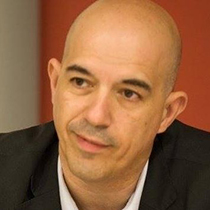
By Roberto Carvalho, 2023-25 assistant Rotary coordinator for Zone 20C (Portugal and Spain)
The 2020-21 Rotary year was not an easy one, either in Europe or around the world, in the face of the COVID-19 pandemic. I had the honor of serving that year as governor of District 1960 and as a member of the Cascais Estoril Rotary Club. It was a year characterized by events canceled at short notice, uncertainty in holding meetings, and many restrictions on other meetings and activities throughout the year.
It was also a year of excellence for Zoom and online meetings. It was a great moment of practical application of one of the elements of Rotary’s Action Plan: adaptation.
We all adapted.
But as Rotarians we can’t stop there, we have and had to do more. In other words, we had to show our pride in being Rotarians. So what did my district do in August 2020 during Rotary’s Membership Development Month?
Something simple:
We made short 20-second videos in which a Rotarian identified themselves by name and the club they belonged to and described a word to define Rotary and a service activity they had done for the community. These videos would be usable by the person and third parties on social networks, allowing their real and virtual “friends” to realize that their friend was a Rotarian, what Rotary was, and what it actually did. In essence, it was the practical application of the other pillars of Rotary’s action plan: expanding its reach, engaging its members, and increasing its impact.
Many Rotarians have made the short videos and used them, and District 1960 during the pandemic year not only increased the retention of its members but also increased their number exponentially.
What have we done since the pandemic?
We have focused on maintaining high levels of member motivation. And it is easier than you might think – by doing projects. Have you ever noticed that when you do a project with a few fellow club members, you get closer to them and more motivated? That’s exactly the key. And if clubs don’t have the means to pull it off, district leaders can step forward to help them. With concrete projects that have an impact on the community, we’ll not only be better known, but we’ll also be more attractive to others.
In my district, for example, programs have been set up to combat diabetes and hepatitis. Each club can carry out a project on the ground in their community. Our project to empower girls includes online meetings with five districts. Someone from each district presents one or two concrete projects that everyone can replicate in their district. These meetings are led by the program’s ambassadors and are attended by everyone.
We also need to focus on people who have stopped attending since the pandemic. They need to be given important tasks so that they feel active and involved. We need to ask them what they think of their club’s activities and what they would propose.
Because of these actions, membership in my district has grown steadily. Clubs have changed the way they hold meetings (reducing the number and changing the days) and have even reduced the frequency and cost of meals.
Let’s continue to do the work of adapting so we can expand our reach and enhance participant engagement.
Learn more about Rotary’s Action Plan and explore new and different club models that can attract diverse leaders to Rotary.
https://blog.rotary.org/2024/09/04/the-need-to-adapt-didnt-stop-with-the-pandemic/
